Tilleke Schwarz was the first artist we ever had the honour of interviewing here at TextileArtist.org. Her work combines the use of mixed media with a clear focus on embroidery on linen, as well as drawings and paintings.
In the run up to her new exhibition in the Autumn of 2013 (at the Knitting and Stitching Show), Tilleke took some time out to reflect on her love of embroidery threads, which types of thread she uses in her work and why their selection is so important to the stitch artist. She also offers some great insights into how threads can be used through couching to create unusual and effective results.
Finding threads in unlikely places
Traditional embroiderers mostly prefer kits, which include a pattern, a piece of cloth and matching threads. Artists and designers love to invent and to pick and choose from a good collection of embroidery threads.
I love to stitch and buying threads is a real passion for me. For the last thirty years I’ve loved shopping anywhere and everywhere to enlarge my collection of threads. I have some 2500 to 3000 to choose from, but I still find interesting additions to my collection of ‘treasure’.
It is exciting to explore little-known suppliers for threads, as some of the best handicraft shops are often hidden in small villages. I also look around in seemingly unrelated shops, like those providing fishing gear. Embroiderers in the UK are well-off as there are many good shops and some amazing stitching events, for instance the famous Knitting and Stitching shows in London, Harrogate and Dublin. Here you can get inspired and find the material you love.
After 30 years of collecting I possess a great collection of threads, neatly organised by colour in boxes. It is so amazing that I can find new additions to my collection almost anywhere. I only use small amounts of thread in any one work so the collection is sufficient for the next 100 years (so I sure hope I live to 167). Why so greedy? No idea, but I notice many artists (painters as well as quilters) have similar habits. Some quilters have huge cupboards full of cloth and designers collect lots of paper from all over the world.
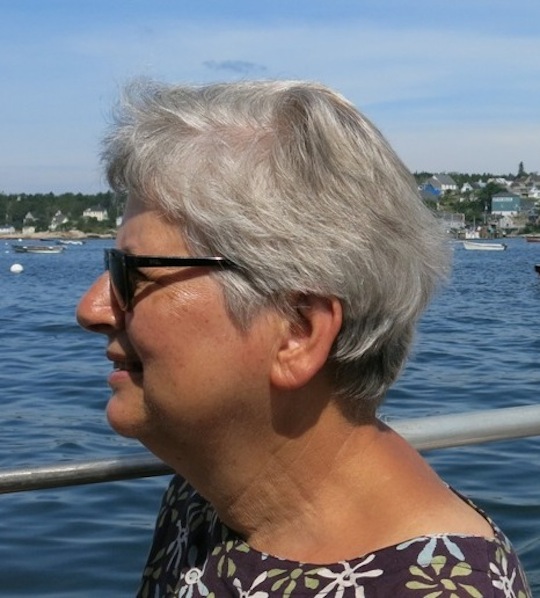
Types of embroidery threads I use
I like to combine various types of thread in my work. Mostly fine threads of different materials, natural as well as synthetic and metal. I like to experiment with the different looks; shiny or not shiny, different textures etc. I find linen threads a bit of a struggle for stitching even though they come in beautiful colours.
Brands
I use all kind of brands, for instance Amman, Caron, Coats
, Gloriana, Gütermann
, House of Embroidery, Tentakulum
, DMC
, Northern Lights
, Madeira
, Oliver Twist
, YLI
, Vaupel & Heilenbeck, Anchor
and refined metal thread from Japan.
Combining threads
I use a lot of fine (sewing) threads and mouliné (usually 1 or 2 out of 6 strands). It is interesting to twist strands of different colours and make your own threads. These threads will result in a very lively surface when using them for cross stitches. It is especially fun to combine light and dark coloured threads.
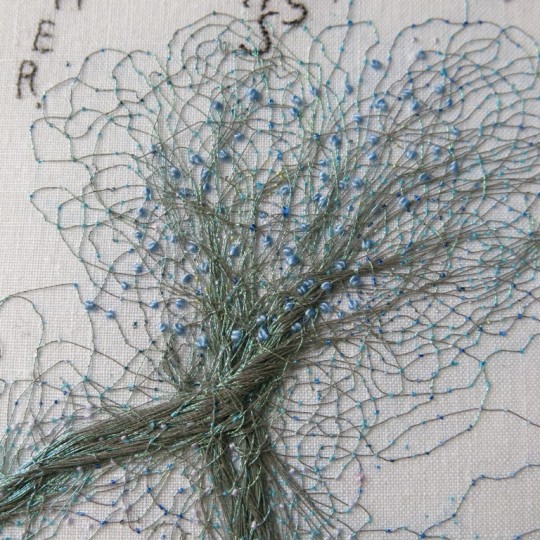
Colourful threads
I also like to buy multi-coloured threads for instance by Oliver Twist. I am a great fan of Caron (Wildflowers and Waterlilies) and recently DMC and Anchor sell this kind of thread too. At The Knitting and Stitching show in London I once bought beautiful Japanese thread, sorry to say I do not know the brand. It looks like metal thread but is less shiny. That kind of thread is too delicate for stitching, but perfect for couching.
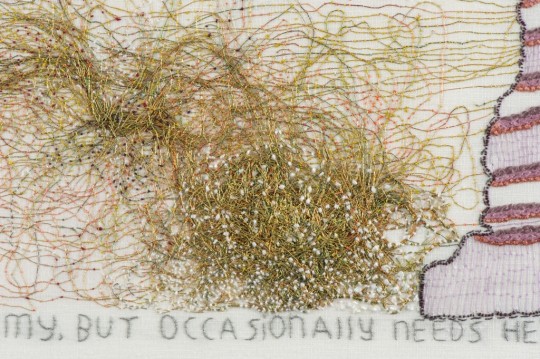
Recently I’ve been enjoying fluorescent threads for special effects.
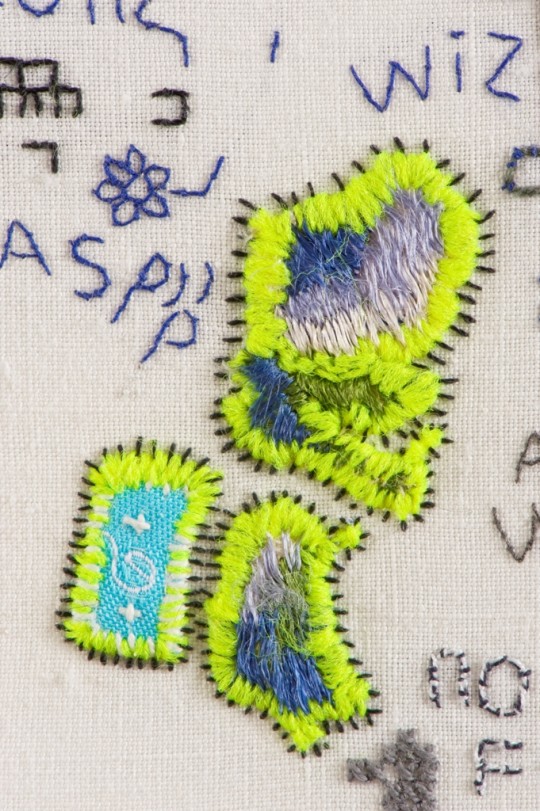
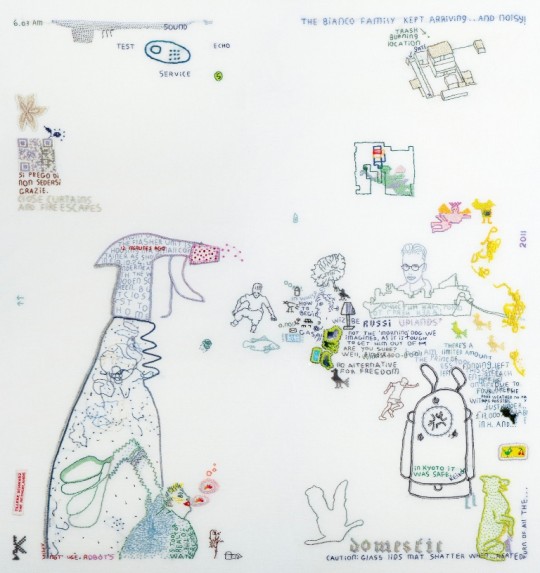
New materials
I love the chance to discover new material. I recently found multicoloured synthetic threads from Joy Crafts in a hobby shop. They are called Yarn by Chrissie and are used for stitching postcards.
Yarns for knitting, crochet, quilt and lace can be very attractive too. And of course sewing and quilting threads are always useful.
In the past I used the famous Danish flower thread but they proved problematic; bleeding after washing and a large variety in colours in the different years of production meant consistency was difficult. I was told it has improved a lot.
Hand-died threads
There are some beautiful hand died threads, but they have a high risk of bleeding when you want to wash your work. Of course not everyone wants to wash their work. In general one is advised to wash the threads before use. Another risk is using ancient threads (from your great great grandmother) as they may decay.
Keep organised
When having so many wonderful threads it makes sense to organise them well. When teaching I always advise to be free and creative in your work, but not with your threads.
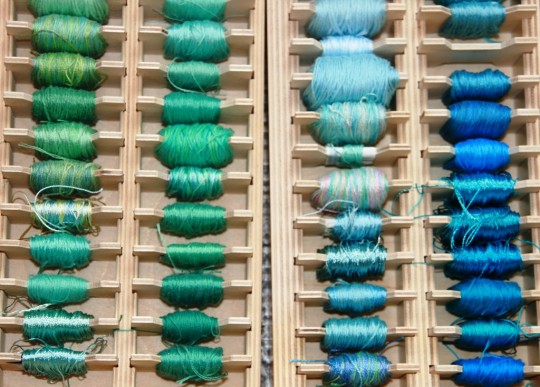
Using threads in my favourite embroidery technique
Last but not least I’d like to tell you about my favourite embroidery technique . . . couching. Originally couching was used to create outlines and fillings in embroidery. It is a method of applying thread to fabric by securing a thicker thread positioned on top of the fabric with a finer thread stitched over the couched thread (definition by Helen McCook of the RSN in Selvedge summer 2013). Nowadays it is mostly used in gold work.
I use couching as a kind of drawing with the needle and for texts, as it allows positioning of the thread with freedom and specificity.
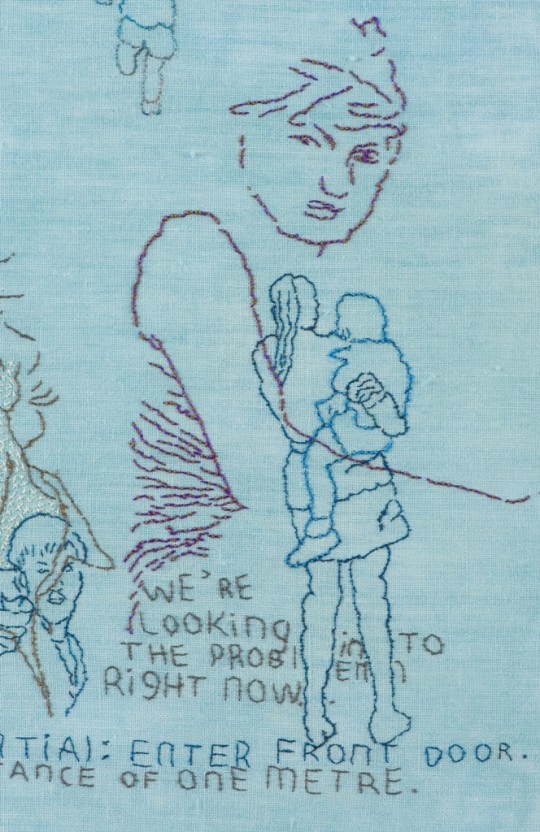
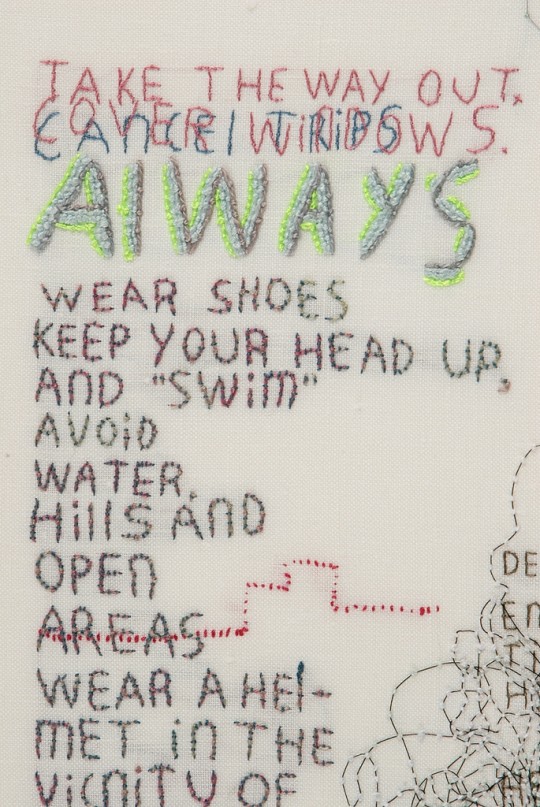
Couching allows for a lot of variation with your threads. There are lots of possibilities.
- Couching with two colours of thread.
- Varying the space between the stitches.
- It is not necessary to always use a thicker thread to be couched with a thinner thread; the opposite combination may give interesting results as well.
- When couching a line (like drawing with the needle), you may add extra couched lines to give it more ‘volume’.
- Apply a shadow line for a special effect; this is especially useful for texts. It makes them stand out. Even when I use cross stitches I may add a couched shadow line.
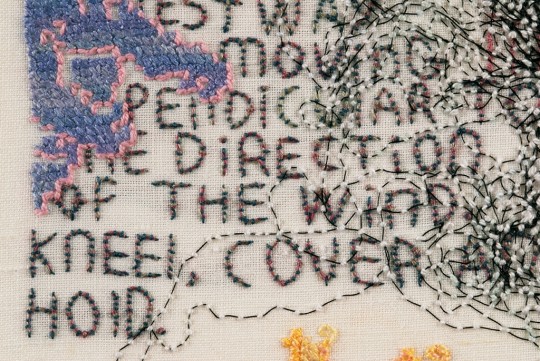
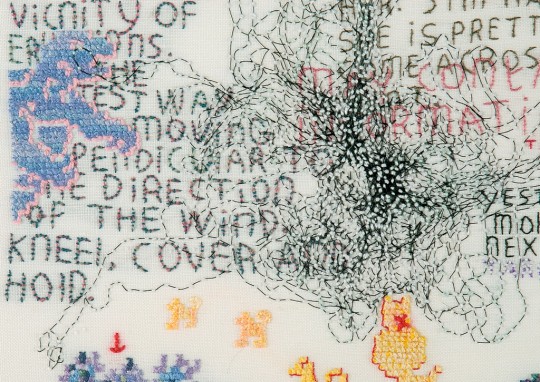
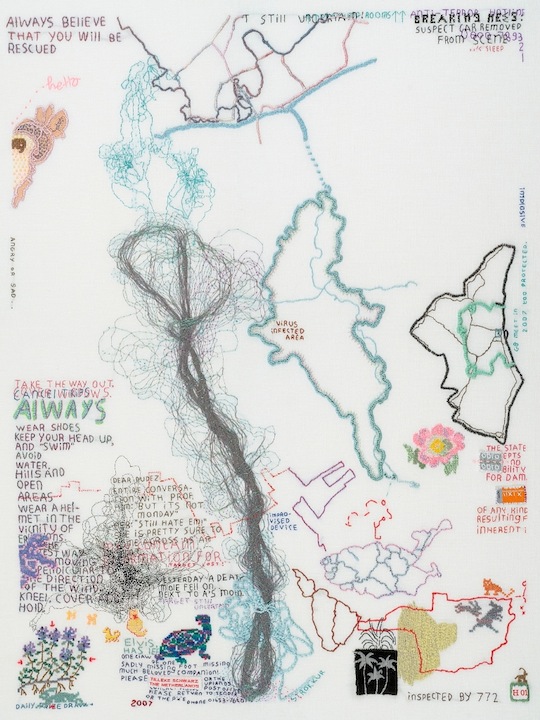
Tilleke Schwarz
- To find out more about Tilleke visit TillekeSchwarz.com and on Instagram
- Read our interview with Tilleke
- See an online gallery of Tilleke’s work
- Read our review of Tilleke’s book New Potatoes
If you’ve found Tilleke’s insights useful why not share the post on Facebook or Twitter?

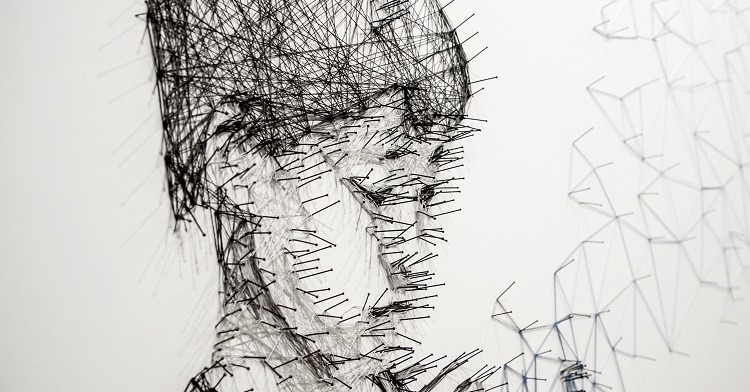
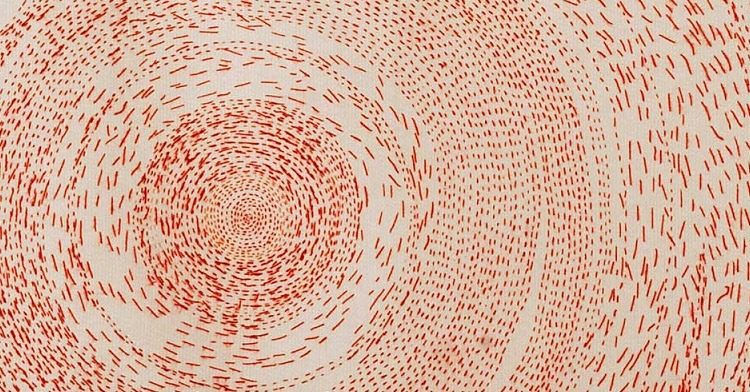
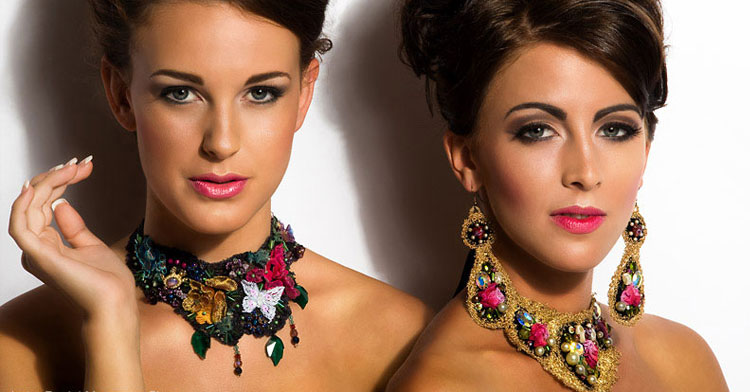
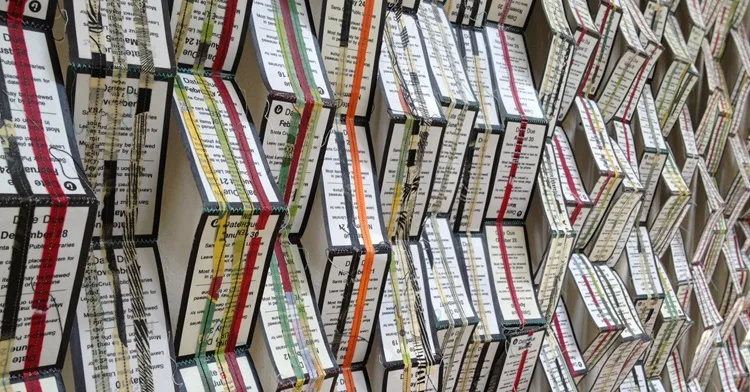
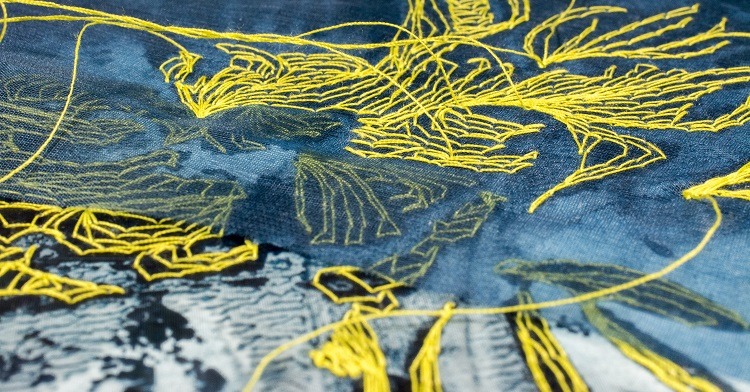
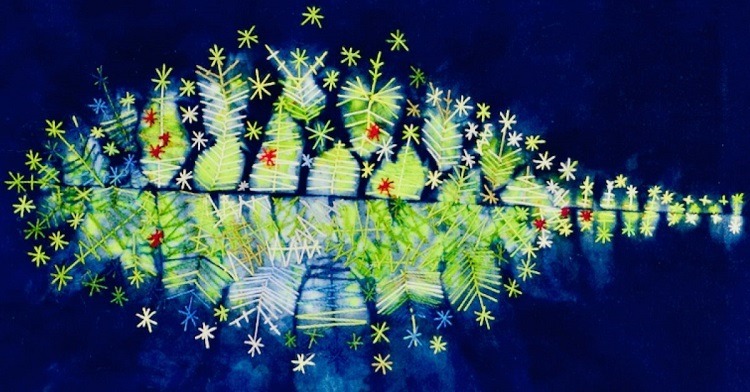
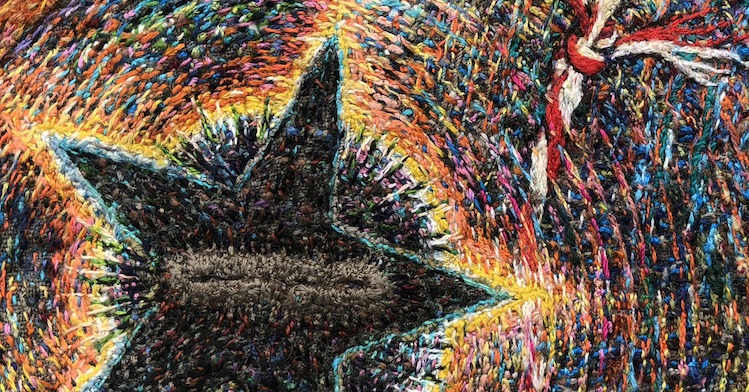
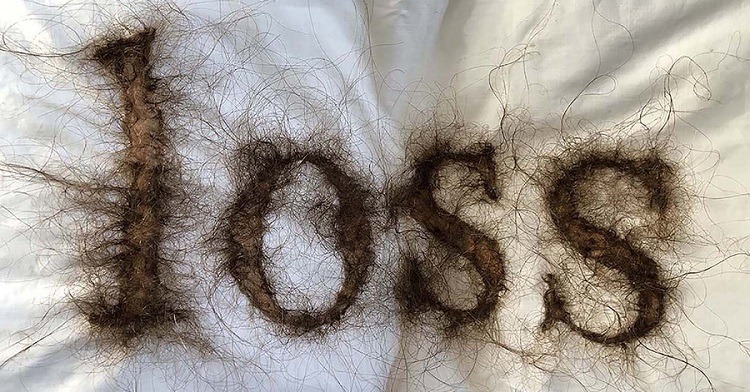
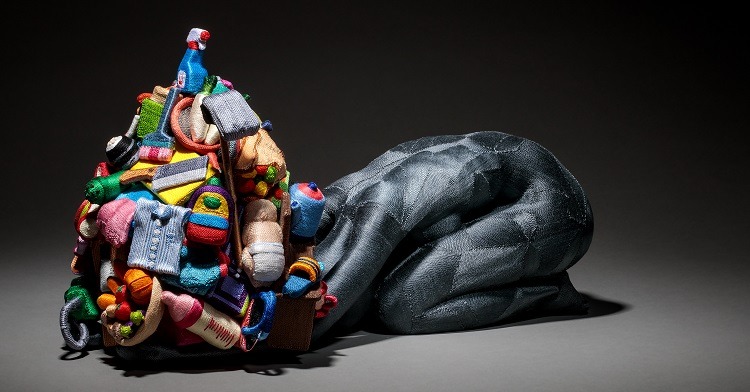
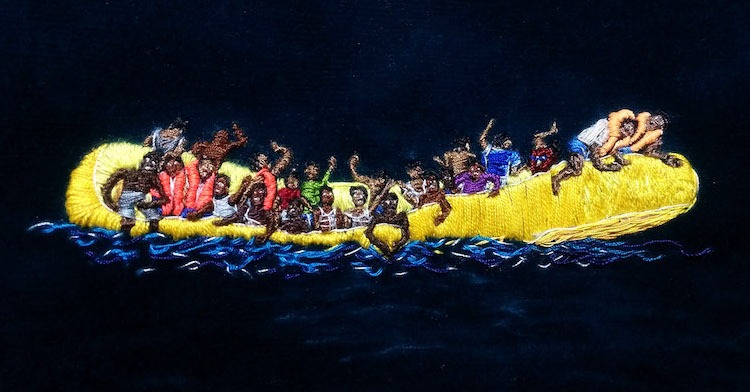
9 comments
Marianne
Dear Tilleke,
I love very much all your works.
“Always believe that you will be rescued” – this one is very near to me.
I was rescued in the II. W.W. – I was 9 y. old in 1944.
Now I’m 89 y.o. but all my memories are keep in mind.
I would like make good embroideries – I tried it but I don’t know, whether they are acceptables or no.
With love
Marianne
Finn
Marianne! Youre story is beautifully inspiring and youre words so kind, create whether you deem it acceptable or not! Art is expression, not competition, make what feels good to you! I wish you the best x
Rose
Where, where, where did you get that fabulous wooden storage box? Beauty AND function–so inspiring.
sherri roberts
I just found this site and your article! I find the freedom and whimsy of your embroidery so appealing. Couching has been my mainstay and basis of my art for decades. I love to explain that I use thread as my “paint, pallet of colors” and I use couching to attach it to my base fabric, invariably silk. People “get it” when I explain my work this way. Thanks for sharing.
Michelle Sirois-Silver
Tilleke – I enjoyed reading about your approach to your materials – in particular the different ways you combine varieties of threads together and how that enriches and brings added depth to your surface. I loved your comment about being free with your ideas but not with the quality of your materials… too true. Your visual narratives are compelling. I’m looking forward to meeting you next fall in Vancouver CDA.
Claire
Your embroidery is wonderful! Your fine detail work looks magical. I have to admit, that picture of the beautifully organized floss drew me in. (I am such a sucker for organized supplies.) I’ve never tried my hand at couching, but you’ve inspired me to give it a go!
Joe
Hi Claire – glad you’ve been inspired. There’s nothing like a bit of organisation to get the creative juices flowing. I’m sure Tilleke will be pleased!
Bozena
I’m a big fan of Tilleke’s art from years now. Good to look through her threads’ pantry 🙂
Joe
Isn’t it great to get an insight into the world behind the art? Thanks for the comment.